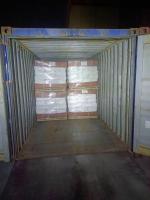Our Products
Polyacrylamide / anionic polyacrylamide technofloc 2120 technofloc 2170 can be replaced by Chinafloc A series

anionic polyacrylamide technofloc 2120 technofloc 2170 can be replaced by Chinafloc A series
technofloc 2120 technofloc 2170 are two models of Anionic polyacrylamide with medium and high charge and molecular wieght,can be used for sugar and industrial wastewater treatment.Chinafloc A2015 and Chinafloc A3018 can replace of them with good result.
Anionic polyacrylamide (PAM), particularly formulations like Technofloc 2120 and Technofloc 2170, is primarily used as a flocculant in water treatment processes. Its application spans various industries due to its ability to enhance particle aggregation and sedimentation, thus improving the clarity of treated water. Below, we delve into the main applications, mechanisms, and benefits of using anionic polyacrylamide, focusing on Technofloc 2120 and Technofloc 2170, and explore their roles in different sectors.
Overview of Anionic Polyacrylamide
Anionic polyacrylamide is a water-soluble polymer composed of acrylamide and acrylic acid. The anionic charge density can be varied, which allows for customization according to specific applications. Technofloc 2120 and Technofloc 2170 are two such anionic polyacrylamide formulations, designed to meet distinct requirements in water treatment and other industrial processes.
Mechanism of Action
The primary mechanism through which anionic polyacrylamide operates is flocculation. In water treatment, suspended particles such as colloids, silt, organic matter, and other impurities are often negatively charged, leading to repulsion and preventing natural settling. Anionic polyacrylamide introduces long polymer chains with negatively charged sites. These chains bridge between particles, neutralizing surface charges and forming larger aggregates called flocs. These flocs are heavier and settle more quickly, facilitating easier removal through sedimentation or filtration.
Main Applications
-
Municipal and Industrial Wastewater Treatment
- Clarification: In wastewater treatment plants, Technofloc 2120 and 2170 are used to remove suspended solids and reduce turbidity. This is crucial for ensuring the quality of discharged water and compliance with environmental regulations.
- Sludge Dewatering: These formulations enhance the dewatering process of sludge, reducing volume and weight, which lowers disposal costs and improves handling.
- Phosphate Removal: Anionic PAM is effective in removing phosphates, which are nutrients that can cause eutrophication in water bodies.
-
Drinking Water Treatment
- Coagulation and Flocculation: In the production of potable water, these chemicals aid in the removal of natural organic matter, pathogens, and other contaminants. This improves the effectiveness of subsequent filtration and disinfection processes.
- Enhanced Settling: They enhance the sedimentation process in clarifiers, ensuring that water leaving the treatment facility meets safety standards.
-
Mining Industry
- Tailings Management: In mineral processing, Technofloc 2120 and 2170 are used to treat tailings, which are by-products of mining operations. They help in the separation of valuable minerals from waste material, reducing the environmental impact.
- Clarification of Process Water: These polymers facilitate the reuse of water in mining processes by removing fine particles and reducing the load on water treatment systems.
-
Paper and Pulp Industry
- Fiber Recovery: Anionic PAM aids in the recovery of fibers from wastewater, improving the efficiency of the recycling process and reducing waste.
- Effluent Treatment: It is used to treat effluents from paper mills, ensuring that discharged water meets environmental standards and reducing the impact on nearby water bodies.
-
Agriculture
- Soil Conditioning: In agriculture, anionic polyacrylamide is used as a soil conditioner to improve soil structure, reduce erosion, and enhance water retention. This can lead to better crop yields and more efficient use of water resources.
- Irrigation Efficiency: By improving the infiltration rate of water in soils, it helps in more efficient irrigation practices, reducing water runoff and promoting sustainable water use.
-
Textile Industry
- Dye Waste Treatment: The textile industry generates wastewater with high levels of dyes and chemicals. Anionic PAM helps in the coagulation and flocculation of these pollutants, making the wastewater easier to treat.
- Process Water Recycling: It aids in the recycling of process water within the textile mills, thereby conserving water and reducing operational costs.
Benefits of Using Anionic Polyacrylamide
- Efficiency: Anionic polyacrylamide is highly effective at low dosages, making it a cost-efficient solution for large-scale water treatment operations.
- Versatility: It can be used across a wide range of pH levels and in various water chemistries, making it adaptable to different treatment scenarios.
- Environmental Impact: By improving the removal of contaminants, anionic PAM reduces the environmental impact of industrial processes and enhances the quality of water released into natural water bodies.
- Improved Process Performance: In industrial applications, the use of anionic PAM leads to improved performance of processes such as sludge dewatering, fiber recovery, and mineral processing, resulting in operational efficiencies and cost savings.
- Regulatory Compliance: Utilizing effective water treatment solutions like Technofloc 2120 and 2170 helps industries comply with stringent environmental regulations, avoiding penalties and contributing to sustainable practices.
Conclusion
Anionic polyacrylamide, with specific formulations like Technofloc 2120 and Technofloc 2170, plays a crucial role in water and wastewater treatment across various industries. Its ability to enhance flocculation, improve sedimentation, and aid in the removal of contaminants makes it an invaluable tool for maintaining water quality and supporting environmental sustainability. Whether in municipal water treatment plants, industrial wastewater systems, or agricultural practices, anionic PAM continues to be a key component in addressing the challenges of water management and pollution control.





826_small.jpg)